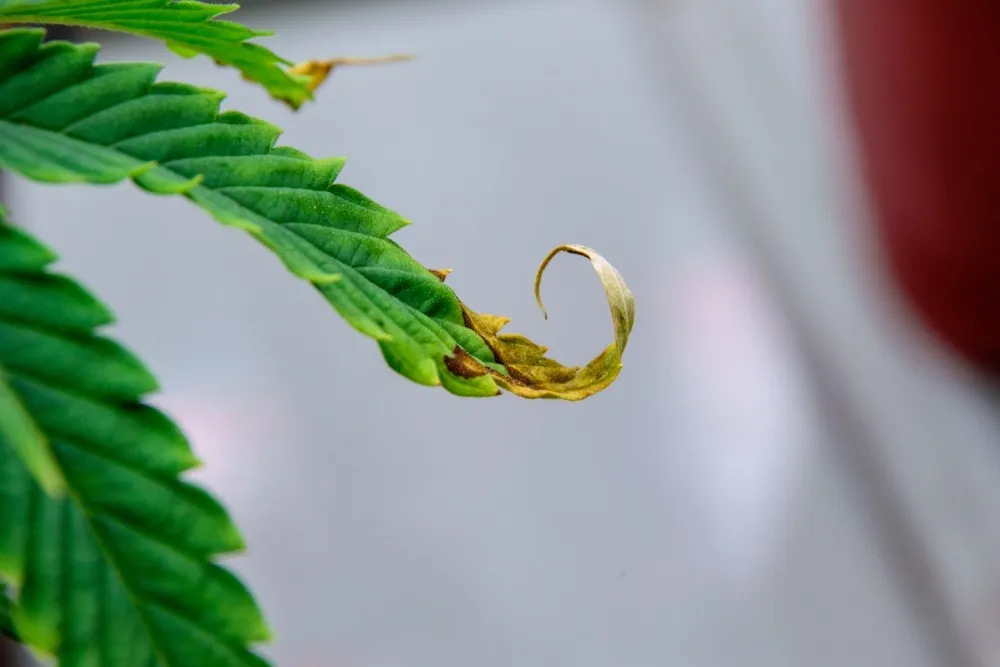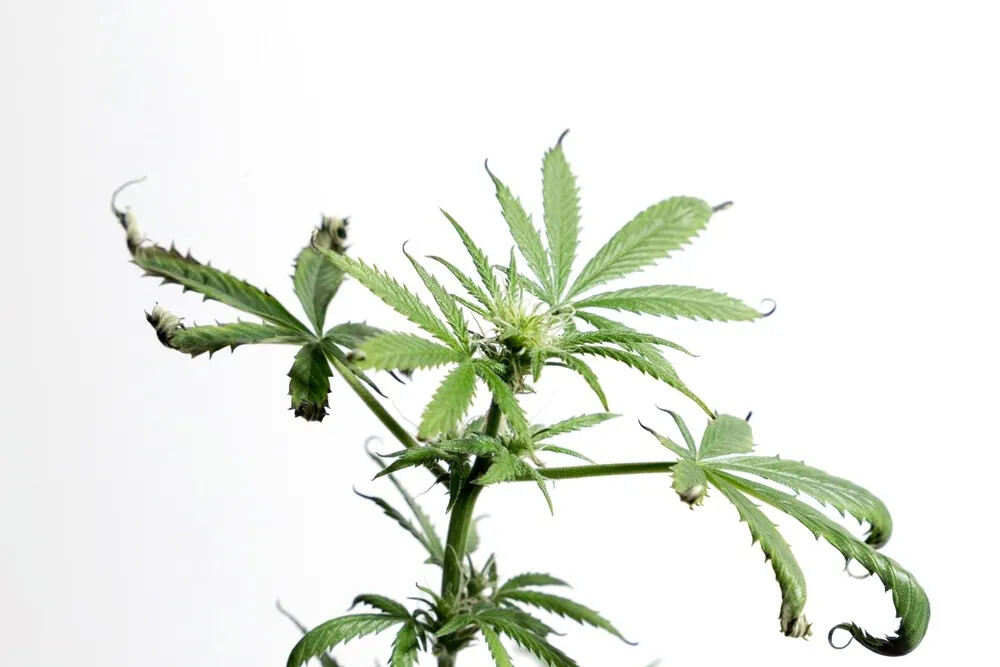The Best Fluffy Pancakes recipe you will fall in love with. Full of tips and tricks to help you make the best pancakes.

Identify and Fix Nutrient Burn in Cannabis
If you’re growing marijuana, at some point, you might’ve overfed your weed plants. It happens to the best of us. Nutrient burn, or “nute burn” as it’s often called, is a common issue caused by giving your plants too many nutrients. But don’t sweat it! I’ll walk you through how to identify, fix, and prevent nutrient burn in your cannabis plants so you can keep your grow on track.
What is Nutrient Burn in Cannabis?
Nutrient burn happens when your cannabis plants receive too much of a good thing—nutrients. While it’s tempting to think that more fertilizer will make your plants thrive, too many nutrients can actually cause the leaves to burn and the plant to stress out.
Understanding the causes of nutrient burn
Nutrient burn is typically caused by over-fertilizing, where you’re giving your plants too many nutrients, often through bottled fertilizers. This overload forces the plant to absorb more than it can handle, leading to burn. Other causes include using nutrient-rich soil without realizing it or misunderstanding how much your specific strain needs.
Common signs and symptoms of nutrient burn
The first symptoms of nutrient burn are often easy to spot if you know what you’re looking for. You’ll notice the tips of your cannabis leaves turning yellow or brown, sometimes even curling downward. As it gets worse, the burnt tips spread further up the leaves. You might also see stunted growth, dark green leaves, and crispy leaf edges. Keep an eye out for these telltale signs!
Causes of Nutrient Burn in Cannabis
Overfeeding with bottled nutrients
It’s easy to overfeed when you’re using bottled nutrients, especially if you’re following the manufacturer’s instructions without adjusting for your plant’s unique needs. Remember, less is often more when it comes to marijuana nutrients. Always start with a smaller dose and increase slowly if needed.
Improper use of bloom boosters and growth stimulants
Bloom boosters and growth stimulants can do wonders for your plants when used correctly, but overdoing it can lead to nutrient burn, especially in the flowering stage. Too much phosphorus or potassium (common in bloom boosters) can overload your plants, so use these fertilizers sparingly.
pH imbalances affecting nutrient uptake
pH levels play a huge role in how well your cannabis plants absorb nutrients. If the pH of your water or soil is off, your plants can either take up too many nutrients or not enough. The ideal pH range for soil is between 6.0 and 6.5. Check your pH regularly to avoid problems.
Overwatering or underwatering plants
Surprisingly, overwatering or underwatering your marijuana plants can lead to nutrient burn. Overwatering can drown the roots and prevent proper nutrient uptake, while underwatering can cause nutrient salts to build up in the soil. Both situations can stress the plant and make it more vulnerable to burn.
Environmental stressors like temperature and humidity
Extreme temperatures and humidity can mess with how your plants use nutrients. High temperatures can cause the plants to drink more, leading to excess nutrient uptake. Low humidity can stress the plant, also leading to nutrient burn. Keep the environment stable, and your weed will thank you.
How to Identify Nutrient Burn Early

Leaf tip discoloration (yellow, brown, or burnt)
The most obvious sign of nutrient burn is the discoloration of the leaf tips. You’ll see them turn yellow, brown, or even black as the burn progresses. Catching it early can help you stop the damage before it gets worse.
Leaf curling and margins showing signs of burn
In addition to discoloration, nutrient burn can cause the leaves to curl, either upward or downward. You’ll also notice the edges of the leaves turning crispy or brittle, further indicating nutrient overload.
Stunted growth and reduced plant vigor
When your plant is dealing with nutrient burn, it’s going to stop growing as vigorously. It puts all its energy into trying to survive the burn, so new growth slows down, and your plant’s overall health can take a hit.
Differences between nutrient burn and deficiencies
While nutrient burn and nutrient deficiencies can look similar, there’s a key difference: burn usually starts at the tips of the leaves and moves inward, while deficiencies tend to cause uniform discoloration throughout the entire leaf. Make sure you know the difference so you can adjust and treat the issue correctly.
Steps to Fix Nutrient Burn
Flushing the growing medium to remove excess nutrients
The quickest way to deal with nutrient burn is to flush your growing medium with plain, pH-balanced water. This helps to wash away the excess nutrients. For soil grows, let water run through the soil until it drains out, repeating the process a couple of times to clear things up.
Adjusting the nutrient feeding schedule
After flushing, cut back on how much you’re feeding your plants. Start with half or even a quarter of what you were using before, and gradually increase if needed. Keep an eye on your plants to see how they respond.
Monitoring and adjusting pH levels
Make sure to check your pH levels after you flush the plants. Keeping the pH in the right range (6.0 to 6.5 for soil) will help your plants absorb the correct amount of nutrients going forward, without risking another burn.
Trimming damaged leaves and buds
If the burn is pretty bad, trim off the damaged leaves and buds. This won’t fix the plant, but it’ll stop the plant from wasting energy on parts that are beyond saving. It also helps prevent mold or rot from setting in on dead plant material.
Supporting plant recovery with root treatments
To help your plants bounce back, consider using root tonics or enzymes to promote healthy root growth. These products can help break down leftover salts and improve nutrient uptake, giving your plants the best chance to recover.
Preventing Nutrient Burn in Future Grows
Proper nutrient selection and dosage control
Choose nutrients specifically designed for cannabis, and stick to the recommended dosages. Be cautious with anything that seems too strong and always start with less than the suggested amount to avoid overfeeding.
Regularly testing and adjusting pH levels
Prevention is all about staying proactive. Regularly test the pH levels of your soil or hydro system and adjust as needed. This simple step can make a huge difference in keeping nutrient burn at bay.
The importance of using high-quality lights
Believe it or not, lighting plays a role in nutrient absorption. If your plants are under low-quality lights, they might not be able to use the nutrients as efficiently. Good lights mean healthier plants and fewer nutrient issues.
Regular flushing of the growing medium
Even if things are going smoothly, it’s a good idea to flush your soil or medium every few weeks. This helps remove any buildup of nutrients that could eventually lead to burn, keeping your plants happy and healthy.
Monitoring plant health regularly for early intervention
The best way to prevent problems is to catch them early. Regularly inspect your plants for any signs of nutrient burn or other issues, and adjust your care routine as needed. It’s all about staying on top of things!
Special Considerations for Autoflowering and Photoperiod Strains
Differences in nutrient requirements
Autoflowering strains are usually more sensitive to nutrients than photoperiod strains. They don’t need as much food, so overfeeding them can lead to nutrient burn more easily. Photoperiod plants, on the other hand, can handle a bit more, but you still need to be careful not to overdo it.
Recovery challenges in autoflowering vs. photoperiod plants
Autoflowers are also less forgiving when it comes to recovery. Since they have a shorter lifecycle, they don’t have as much time to bounce back from nutrient burn. Photoperiod plants, with their longer veg cycle, can recover more easily if you catch the problem early.
FAQ:
Can cannabis recover from nutrient burn?
Yes, cannabis can recover if nutrient burn is caught early. After flushing the soil and reducing nutrient feeding, the plant will redirect energy to healthy growth.
How do I flush nutrients from my cannabis plants?
Flush your plants by watering them with pH-balanced water until runoff drains from the bottom of the pot, effectively washing away excess nutrients.
What are the early signs of nutrient burn in cannabis?
Look for yellowing or browning at the tips of the leaves, as well as leaf curling and crispy edges.
Is nutrient burn more common during certain growth stages?
Nutrient burn is more common during the flowering stage when plants require fewer nutrients and overfeeding becomes easier.
How do I prevent nutrient burn when using bloom boosters?
Use bloom boosters sparingly, following the recommended dosage and gradually increasing as needed. Start slow, especially in the flowering stage.
Nutrient burn might sound like a disaster, but trust me, it’s fixable! By knowing how to identify the early signs and taking the right steps to treat and prevent it, you’ll keep your marijuana plants thriving. Just remember, less is more when it comes to feeding your plants. Stay proactive, keep an eye on pH levels, and flush regularly—and you’ll be harvesting healthy, happy buds in no time!




